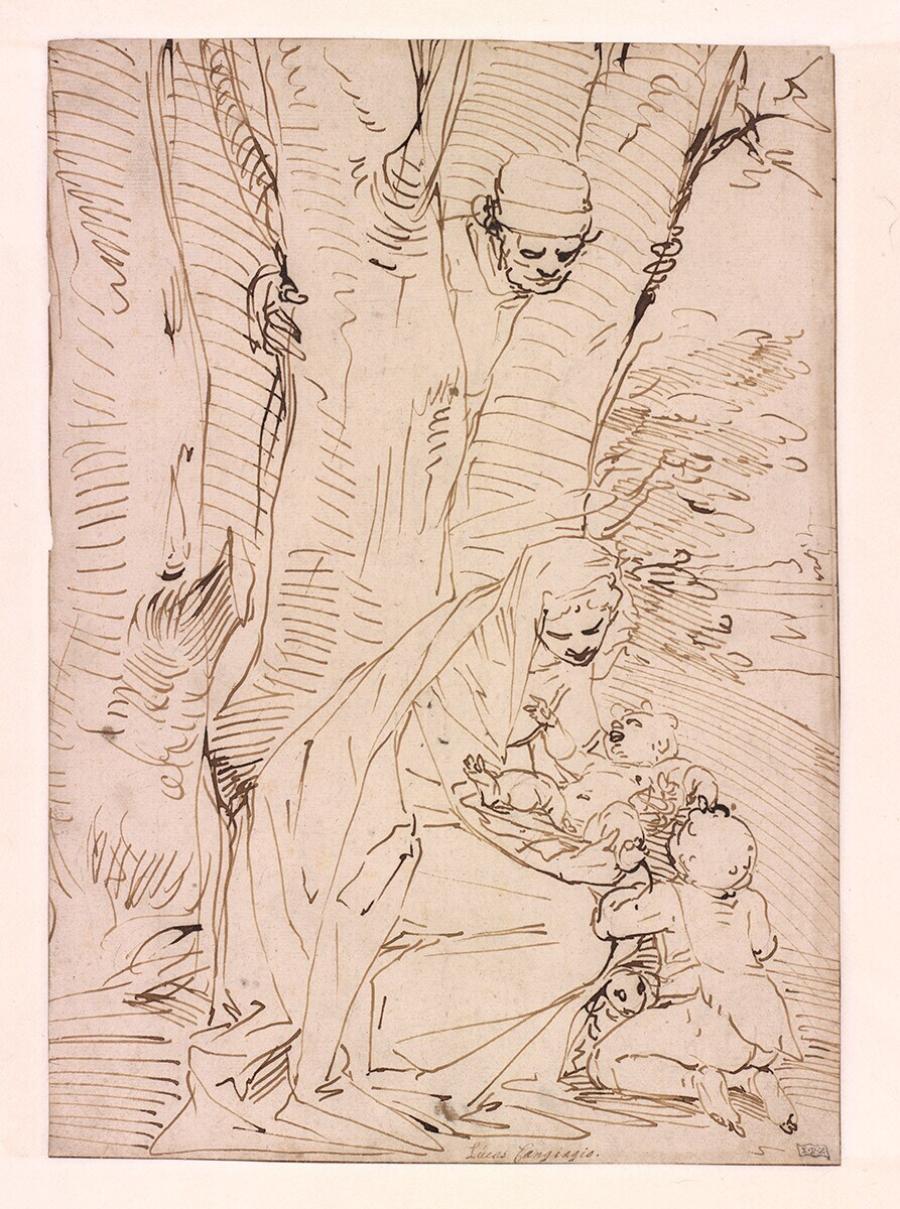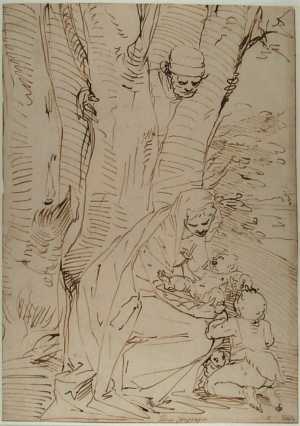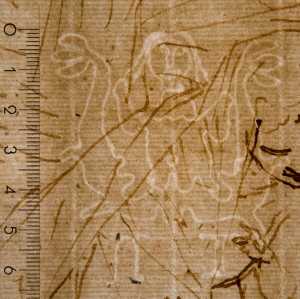Specifications
| Title | The Holy Family with the Infant St John |
|---|---|
| Material and technique | Pen and brown ink |
| Object type |
Drawing
> Two-dimensional object
> Art object
|
| Location | This object is in storage |
| Dimensions |
Height 345 mm Width 242 mm |
|---|---|
| Artists |
Circle of:
Luca Cambiaso
|
| Accession number | I 130 (PK) |
| Credits | Loan Stichting Museum Boijmans Van Beuningen (former Koenigs collection), 1940 |
| Department | Drawings & Prints |
| Acquisition date | 1940 |
| Creation date | in circa 1550-1585 |
| Watermark | Siren with initials NT below (62 x 58 mm, on P4-6 of 8P, vH, cropped folio), similar to Briquet 13876 (Genoa 1547, with initials MT), but slightly smaller. The same type of watermark, but the woman with a hat and with initials GR below, is present in a drawing by Cambiaso in the Fondation Custodia, inv. 5066, repr. In Byam Shaw 1983, vol. 2, p. 135, fig. 410 [see image] |
| Inscriptions | 'Lúcas Cangiagio.' (lower right, pen and brown ink, handwriting of J.P. Zomer; Plomp 1997, p. 16, fig. 5a) |
| Collector | Collector / Franz Koenigs |
| Mark | J.P. Zoomer (L.1511), F.W. Koenigs (L.1023a) |
| Provenance | J.P. Zoomer (L.1511), his stock-cat. 1720-24; possibly his sale, Amsterdam 05.04.1725 (no cat. surviving); J.B.J. Achtienhoven, Amsterdam, his sale (Schely, Bosch et al.) Amsterdam 06.09.1802, album B, no. 5 (Fl 4 to Yver); - ; Franz W. Koenigs (1881-1941, L.1023a), Haarlem, acquired in 1920-1930; D.G. van Beuningen (1877-1955), Rotterdam, acquired with the Koenigs Collection in 1940 and donated to Stichting Museum Boijmans Van Beuningen |
| Exhibitions | Rotterdam 1980-81; Rotterdam 2009 (coll 2 kw 1) |
| Internal exhibitions |
De Collectie Twee - wissel I, Prenten & Tekeningen (2009) |
| Research |
Show research Italian Drawings 1400-1600 |
| Literature | Plomp 1997, p. 16, fig. 5, 5a |
| Material | |
| Object | |
| Geographical origin | Italy > Southern Europe > Europe |
Do you have corrections or additional information about this work? Please, send us a message

























